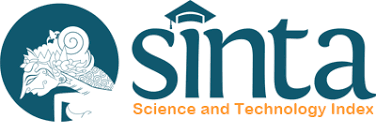KOMUNITAS ARAB: KONTINUITAS DAN PERUBAHANNYA DI KOTA SURABAYA 1900–1942
DOI:
https://doi.org/10.14203/jmb.v7i2.230Abstract
This article was aimed to explanation of the continuity and change Arab communities in Surabaya cities 1900 – 1942. The development included the community life since the migration to Surabaya, social, politic, economic, and other following effects. This study found mort Arabs who came to Surabaya were from Hadramaut, the infertile highland. When the Suez Canal was opened In 1869, the Arabs migrated to Netherlands East Indies, especially to Surabaya. The Arabs migration came from Al Makalla (Asy Syihr) path to Bombay, Ceylon, Singapore, and Aceh. From Aceh and Singapore, the Arab went to different areas in Indonesia like Batavia, Cirebon, Tegal, Pekalongan, and Surabaya. The local people respected the Arabs, because of their efforts in spreading Islam, especially wali and kiai. That position gave benefits for Arabs because they were accepted in society easily, eventhough some of then were renters. This profession was absolutely forbidden and prohibited in Islam. In this context, it could be seen that religion was not always in accordance with economy activities indeed, religion was the media for economy activities. Key Word: migration, society, network, and changeDownloads
Issue
Section
Authors who publish with this journal agree to the following terms:
- The copyright for articles in this journal is retained by the authors.
- Authors grant to the journal first publication rights and the right to distribute the article, including the journal's web site, online data bases and other similar forms.
- Authors agree to license their work according to Creative Commons Attribution-NonCommercial-NoDerivatives 4.0 International License.
- Articles published in JMB are free to use for non-commercial uses as long as the authors and the journal are attributed properly and the new creations are licensed under the indentical terms (license Creative Commons (CC BY-NC-ND 4.0).
- Authors retain the right to reproduce and distribute their articles in any format, without prior authorization, with the proper acknowledgment to the first publication.
- If the article contains copyright material owned by others, authors should obtain written permission from the copyright owner/s in order to reuse the material. Appropriate acknowledgment should be included.
- Authors are encouraged to post their article online (in institutional repositories, personal websites etc). Any such posting must include a reference and a link to the journal's website.
Penulis yang menerbitkan pada jurnal ini menyetujui ketentuan berikut:
- Hak cipta untuk artikel dalam jurnal ini disimpan oleh penulis.
- Penulis memberikan kepada jurnal hak publikasi pertama dan hak untuk mendistribusikan artikel, termasuk situs web jurnal, basis data online dan bentuk serupa lainnya.
- Penulis setuju untuk melisensikan karya mereka sesuai dengan Creative Commons Attribution-NonCommercial-NoDerivatives 4.0 International License.
- Artikel yang diterbitkan dalam JMB bebas digunakan untuk penggunaan non-komersial selama penulis dan jurnal dikaitkan dengan benar dan kreasi baru dilisensikan menurut istilah indentis (lisensi Creative Commons (CC BY-NC-ND 4.0).
- Penulis mempertahankan hak untuk mereproduksi dan mendistribusikan artikel mereka dalam format apa pun, tanpa izin sebelumnya, dengan pengakuan yang tepat untuk publikasi pertama.
- Jika artikel tersebut berisi materi hak cipta yang dimiliki oleh orang lain, penulis harus mendapatkan izin tertulis dari pemilik hak cipta untuk menggunakan kembali materi tersebut. Pengakuan yang tepat harus disertakan.
- Penulis didorong untuk memposting artikel mereka secara online (dalam repositori institusional, situs web pribadi dll). Setiap posting seperti itu harus menyertakan referensi dan tautan ke situs web jurnal.

.png)









